Introduction
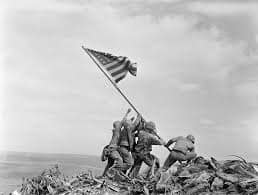
World War 2 stands as one of the most defining events in human history, marking the deadliest conflict ever recorded. Spanning from 1939 to 1945, this global war involved over 30 countries and resulted in the loss of more than 70 million lives. Its profound impact reshaped nations, economies, and societies, leaving a legacy that continues to influence the world today. Understanding World War II is crucial for learning the lessons of resilience, leadership, and the importance of peace and cooperation in preventing future conflicts.
Causes of World War 2
The causes of World War 2 were complex, involving a mix of political, economic, and social factors that built up over time. Here’s a simpler explanation of how the war started and why it became so widespread.
1. The Aftermath of World War I
After (World War I) ended in 1918, the world was left in chaos. One of the biggest consequences was the Treaty of Versailles, which blamed Germany for the war and made it pay huge reparations. This weakened Germany’s economy and caused anger among its people. Many felt humiliated, which created the perfect conditions for the rise of (Adolf Hitler) and the (Nazi Party).
2. The Rise of Adolf Hitler and Nazi Germany
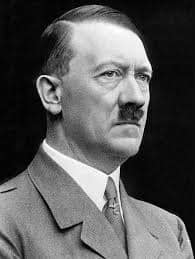
Adolf Hitler used the anger and frustration of the German people to gain power. He promised to restore Germany’s pride and strength, blaming other countries for Germany’s problems. His ideas, known as Nazi ideology, were based on extreme nationalism and racism, particularly against Jewish people. Hitler’s goal was to expand Germany’s territory and make it the most powerful nation in Europe.
3. Fascism and Military Governments
In addition to (Nazi Party), other countries also saw the rise of authoritarian (strict) governments. In Italy, Benito Mussolini led the Fascist Party, promising to make Italy powerful again. Similarly, Japan’s military leaders began pushing for expansion into other parts of Asia. These leaders believed that military force was the key to building strong nations and sought to increase their countries’ territories through war.
4. The Great Depression and Its Impact
In the 1930s, the world was hit by the Great Depression, a massive economic crisis that caused widespread poverty and unemployment. Many people lost their jobs, and countries faced financial hardship. This created instability, and some citizens started to support leaders like Hitler and Mussolini, who promised solutions through strict government control and military power.
5. Appeasement and Failure to Stop Aggression
In the years leading up to the war, many countries, especially Britain and France, tried to avoid conflict by following a policy called appeasement. This meant that they let (Germany) take certain actions, hoping it would prevent a larger war. For example, they allowed Hitler to take over Austria and parts of Czechoslovakia. However, this only encouraged Hitler to be more aggressive.
6. Germany Invades Poland
On September 1, 1939, Hitler took the final step and invaded (Poland). This attack was the spark that officially started World War 2. In response, Britain and France declared war on Germany on September 3, 1939. The world was now plunged into another massive war, which would last until 1945.
Start World War 2
World War 2 started because of a mix of bad political decisions, economic struggles, and the rise of aggressive, military-focused governments. The Treaty of Versailles, the rise of dictators like Hitler and Mussolini, the Great Depression, and countries’ failure to stop aggressive actions all played a role. Once Germany invaded Poland, the war spread quickly, and the world became caught in one of the deadliest conflicts in history.
The Start of World War 2
1. The Invasion of Poland (1939)
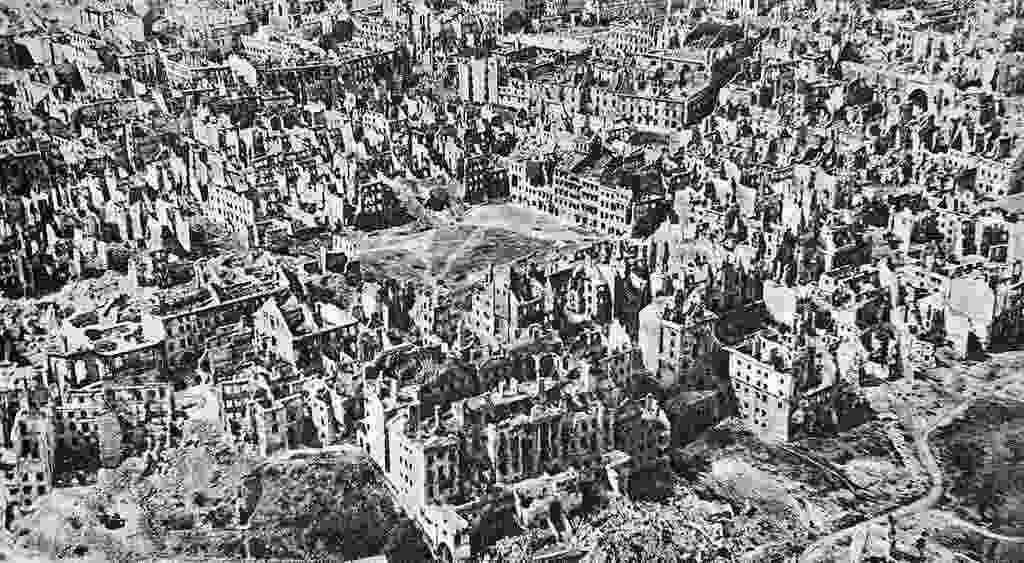
The official start of World War 2 happened when Adolf Hitler, the leader of Nazi Germany, invaded Poland on September 1, 1939. Hitler’s main goal was to expand Germany’s territory and spread his (Nazi ideology) across Europe. He believed that the German people needed more living space (“Lebensraum”), and this expansionist idea led to his decision to invade neighboring countries.
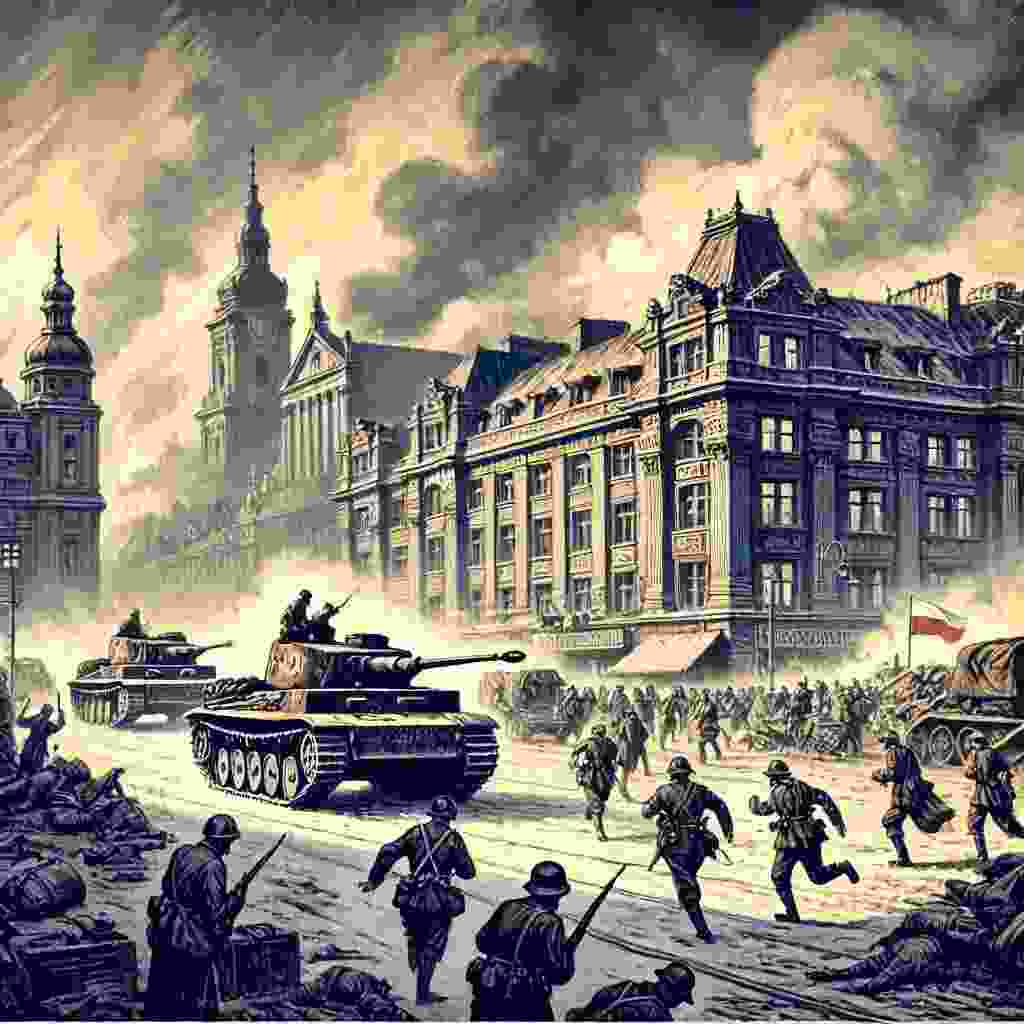
To carry out the invasion, Hitler used a military strategy called Blitzkrieg, which means (Lightning war) in German. Blitzkrieg involved fast, coordinated attacks using tanks, airplanes, and infantry (soldiers on foot) to overwhelm and confuse the enemy. The speed of the attacks made it difficult for Poland to defend itself effectively.
The German military launched a surprise attack early in the morning on September 1, 1939, and within days, they had made significant progress. The attack was brutal, and Polish defenses were quickly overrun.
2. Britain and France’s Response
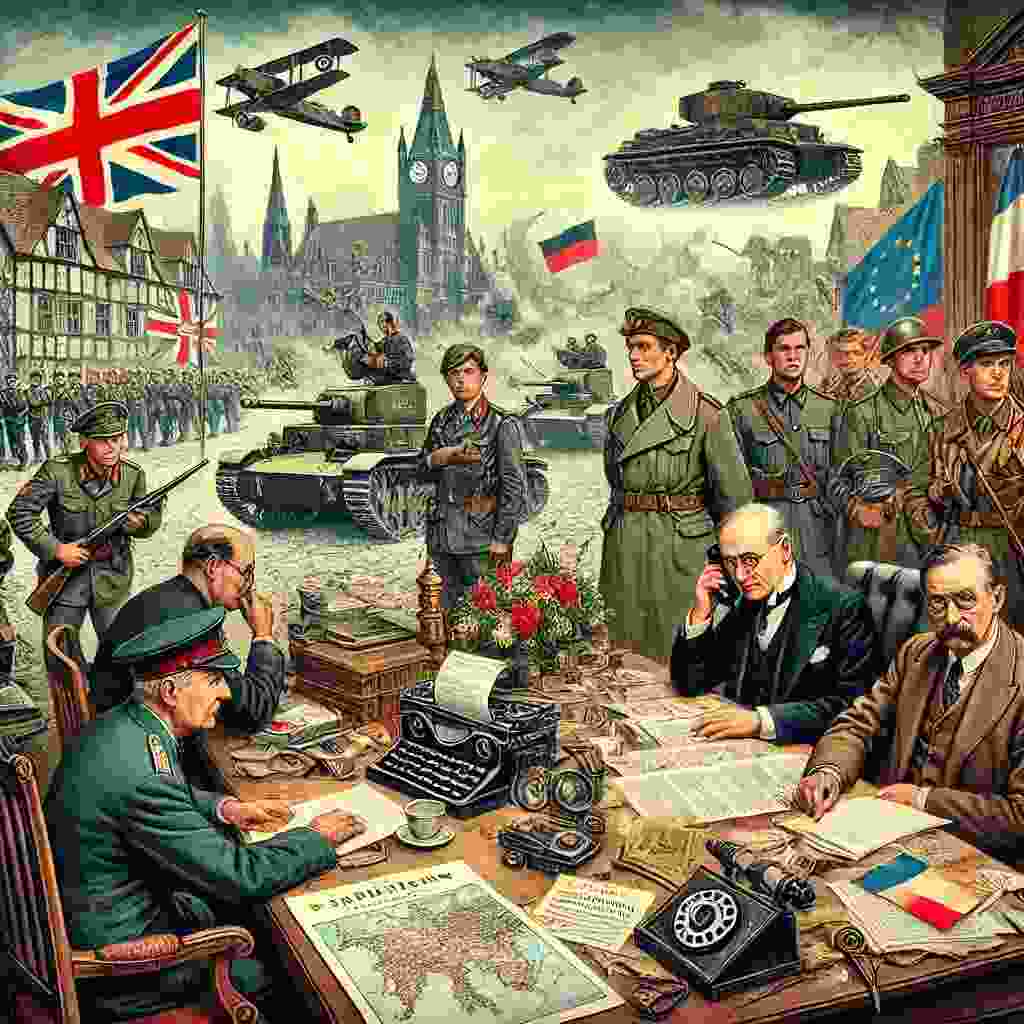
After Germany invaded Poland, Britain and France realized they had to act. They had both signed agreements with Poland to defend it if it was attacked. On September 3, 1939, just two days after Germany’s invasion, both Britain and France declared war on Germany. This declaration marked the official start of World War 2, as it signified that the conflict had moved beyond a regional issue and had now become a global war.
Though (Britain and France declared war), they were unable to help Poland immediately, as Germany’s fast-moving forces had already advanced deep into Polish territory. Poland was soon divided and overwhelmed.
3. The Division of Poland: The Ribbentrop-Molotov Pact

Before the invasion of Poland, Germany and the (Soviet Union), led by (Joseph Stalin), secretly negotiated an agreement. This agreement was known as the (Ribbentrop-Molotov Pact) (named after the foreign ministers of both countries, Vyacheslav Molotov of the Soviet Union and Joachim von Ribbentrop of Nazi Germany). Signed on August 23, 1939, this non-aggression pact had major consequences for Poland.
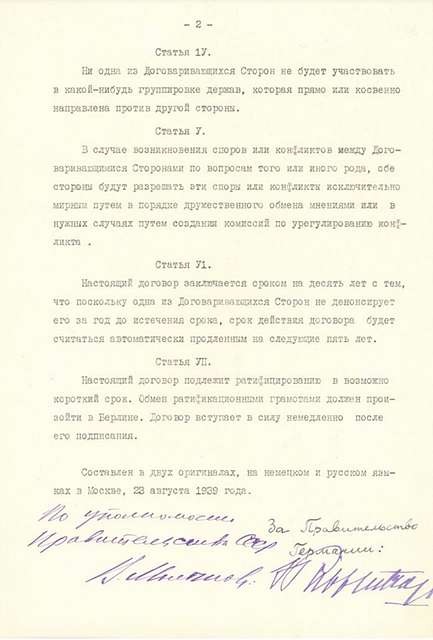
Under the terms of this agreement, both Germany and the Soviet Union promised not to attack each other. They also secretly agreed to divide Poland between them. The pact gave Germany the green light to invade Poland from the west, while the Soviet Union would invade from the east.
On September 17, 1939, just over two weeks after the German invasion, the Soviet Union entered Poland from the east, effectively splitting the country in two. This division left Poland vulnerable and unable to defend itself against two major powers.
4. The Spread of the War
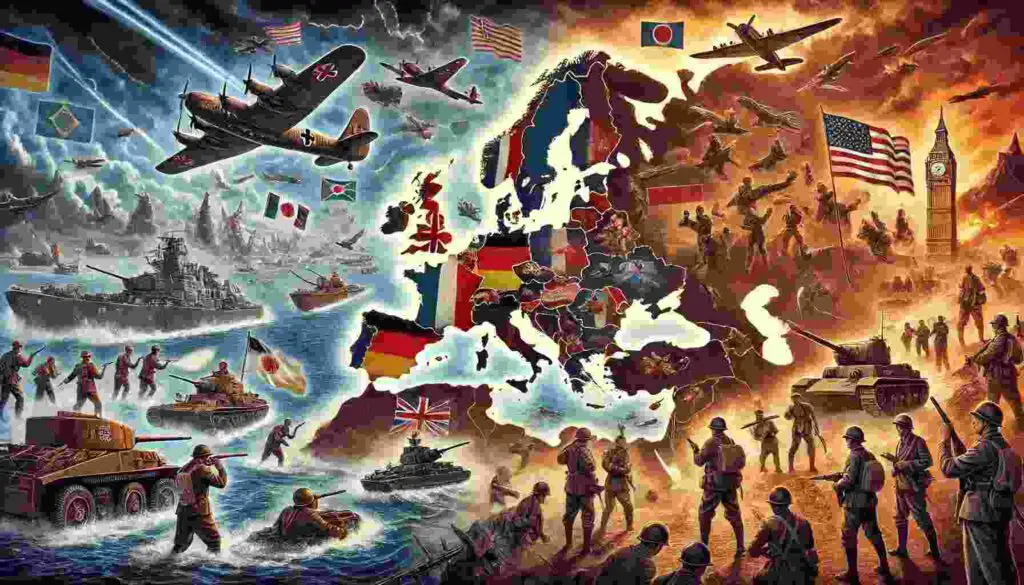
As Germany and the Soviet Union divided Poland, the war quickly spread across Europe. Other countries in Europe, like Belgium, France, and the Netherlands, feared that they might be next. Germany continued its aggressive expansion across the continent.
In 1940, Germany launched attacks on Denmark and Norway, and in 1941, it invaded France, leading to the fall of the French government. Meanwhile, Italy, under the leadership of (Benito Mussolini), joined Germany as part of the (Axis Powers), seeking to expand its own empire in Africa.
The war was no longer just about Europe. Germany’s alliance with Italy and Japan led to military actions around the world, including Japan’s attacks in Asia and the Pacific, such as the bombing of Pearl Harbor in December 1941. This attack brought the United States into the war, expanding the conflict to the Pacific and making it a truly global war.
Major Powers and Alliances in World War 2
World War 2 was a global conflict that divided nations into two main groups: the Axis Powers and the (Allied Powers). These alliances were formed based on shared goals, military strategies, and ideological beliefs.
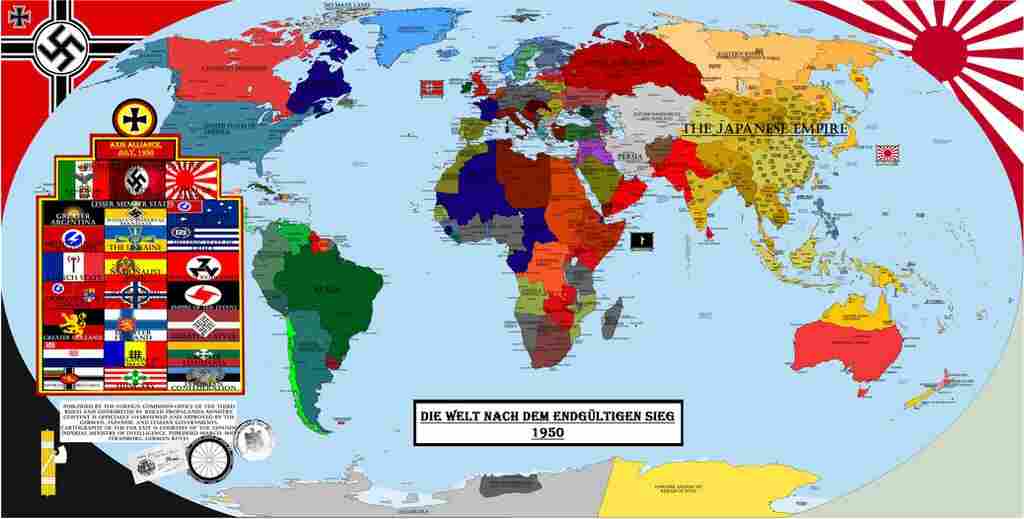
1. Axis Powers
The Axis Powers included Germany, Italy, and Japan. These countries worked together to expand their territories and dominate the world.
1-Germany
- Leader: Adolf Hitler

- Goals:
- Expand Germany’s borders under the concept of “Lebensraum” (living space).
- Spread Nazi ideology, which promoted German superiority and racial purity.
- Eliminate Jewish communities and other minorities, leading to the Holocaust.
- Actions:
- Invaded Poland in 1939, starting World War 2.
- Took control of several European countries, including France and the Netherlands.
2-Italy
- Leader: Benito Mussolini

- Goals:
- Create a “New Roman Empire” by controlling areas around the Mediterranean Sea.
- Promote fascism and expand Italian influence.
- Actions:
- Invaded Ethiopia and other parts of Africa.
- Partnered with Germany in European military campaigns.
3-Japan
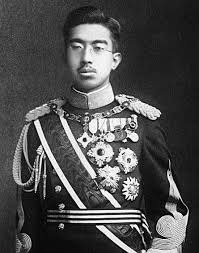
- Leader: (Emperor Hirohito) (symbolic) and military leaders like General Tojo.
- Goals:
- Establish dominance in Asia through the “Greater East Asia Co-Prosperity Sphere.”
- Seize resources from China, Korea, and Southeast Asia.
- Actions:
- Invaded Manchuria (1931) and mainland China (1937).
- Attacked Pearl Harbor in 1941, drawing the U.S. into the war.
2. Allied Powers
The Allied Powers opposed the aggression of the Axis countries. They fought to defend freedom, democracy, and the sovereignty of nations. Major Allied countries included the United States, Soviet Union, (United Kingdom), and France.
1-United States

- Leader: (Franklin D). Roosevelt (during most of the war) and (Harry Truman) (later).
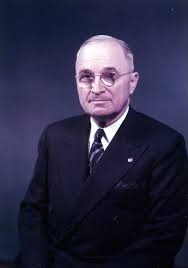
- Goals:
- Protect democracy and fight against fascist regimes.
- Retaliate after the Japanese attack on Pearl Harbor.
- Actions:
- Supported Allied nations with supplies and troops.
- Played a key role in the (D-Day) invasion of Europe (1944).
- Dropped atomic bombs on Hiroshima and Nagasaki to end the war with Japan.
2-Soviet Union
- Leader: Joseph Stalin

- Goals:
- Defeat Nazi Germany after being attacked in Operation Barbarossa (1941).
- Spread communist influence in Eastern Europe.
- Actions:
- Won the Battle of Stalingrad, a turning point in the war.
- Captured Berlin, leading to Germany’s surrender.
3-United Kingdom
- Leader: (Winston Churchill)
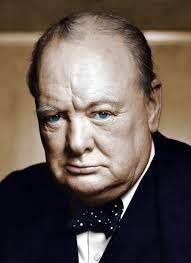
- Goals:
- Resist Nazi Germany’s expansion and protect British sovereignty.
- Support Allied military efforts through strategic planning and operations.
- Actions:
- Fought in the Battle of Britain, preventing a German invasion.
- Collaborated in the planning and execution of the D-Day invasion.
4-France
- Leader: (Charles de Gaulle) (Free French Forces).
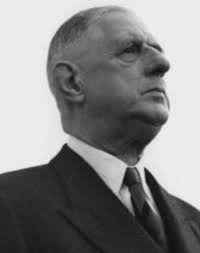
- Goals:
- Liberate France from German occupation.
- Actions:
- Led resistance movements against German forces.
- Worked with Allies to restore independence.
Other Allied Nations
- China: Resisted Japanese occupation.
- Canada, Australia, and New Zealand: Provided troops and support for Allied operations.
Comparison of Axis and Allied Powers
| Axis Powers | Allied Powers |
|---|---|
| Germany, Italy, Japan | U.S., Soviet Union, UK, France |
| Sought territorial expansion | Fought for freedom and democracy |
| Promoted fascism and militarism | Advocated for peace and human rights |
The Axis Powers aimed to dominate the world through aggression and conquest, while the Allied Powers united to protect democracy and end the war. This clash of ideologies and goals shaped the events of World War 2, leaving a lasting impact on the world.
Key Events and Turning Points of World War 2
1. The Start of the War: Invasion of Poland (1939)
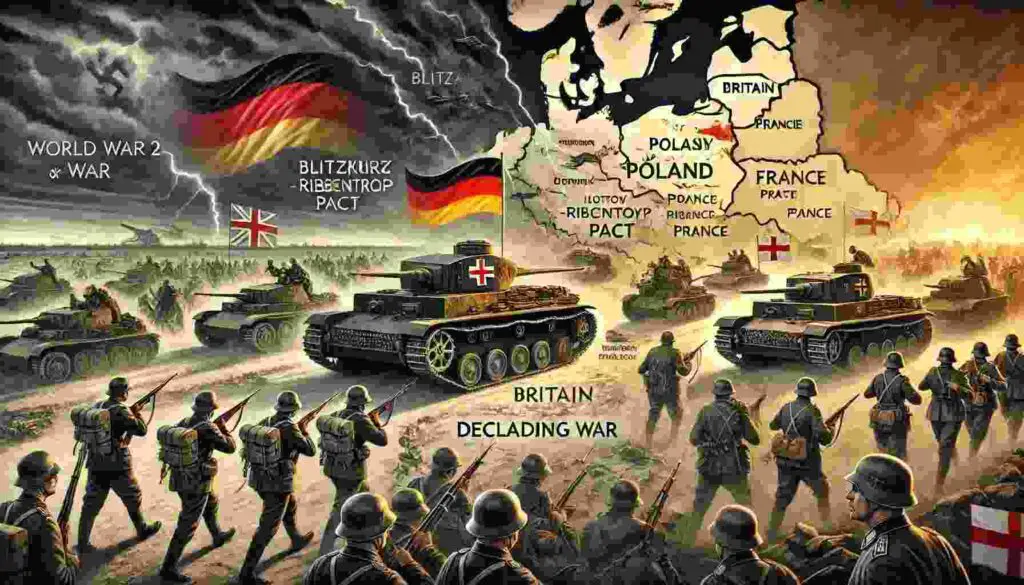
World War 2 began on September 1, 1939, when Germany invaded Poland.
- Hitler’s Plan:
(Adolf Hitler), the leader of (Nazi Germany), wanted to expand German territory and spread Nazi ideology across Europe. - Blitzkrieg Tactic:
Germany used a fast and powerful military strategy called “Blitzkrieg,” meaning “lightning war,” to quickly defeat Polish forces. - Britain and France’s Response:
On September 3, 1939, Britain and France declared war on Germany. - Division of Poland:
Germany and the Soviet Union signed a pact to divide Poland between them. This agreement was called the Molotov-Ribbentrop Pact.
This invasion officially marked the beginning of World War 2.
2. The Battle of Britain (1940)
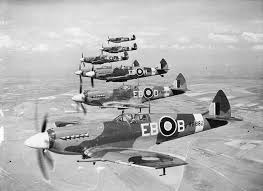
In 1940, Germany attempted to conquer Britain through a massive air campaign.
- Germany’s Goal:
Hitler wanted to destroy Britain’s air defenses and force the country to surrender. - Royal Air Force (RAF):
Britain’s Royal Air Force used advanced radar technology and skilled pilots to defend the skies. - Outcome:
Germany failed to defeat Britain, marking Hitler’s first major military setback.
3. Attack on Pearl Harbor: U.S. Enters the War (1941)
On December 7, 1941, Japan attacked the U.S. naval base at Pearl Harbor in Hawaii.
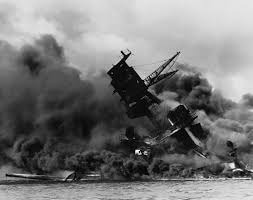
- Details of the Attack:
Japanese planes launched a surprise attack, sinking several American ships and killing over 2,400 people. - America’s Response:
The United States declared war on Japan the next day, officially joining World War 2. - Impact:
This event expanded the war into a truly global conflict.
4. The Battle of Stalingrad: Turning Point on the Eastern Front (1942–1943)
The Battle of Stalingrad was one of the deadliest battles in history and a major turning point in the war.

- Germany’s Attack:
Hitler’s forces aimed to capture the Soviet city of Stalingrad for its strategic importance. - Soviet Resistance:
The Soviet Union fought back fiercely, trapping and defeating the German army. - Result:
This victory shifted momentum in favor of the Allies on the Eastern Front.
5. D-Day: The Allied Invasion of Normandy (1944)
On June 6, 1944, Allied forces launched a massive attack on German-occupied France.
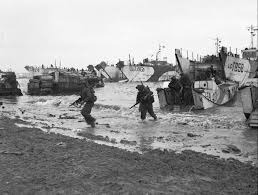
- Operation Overlord:
This operation, also called D-Day, was the largest amphibious (sea-to-land) invasion in history.- Troops from the United States, Britain, and Canada landed on the beaches of Normandy.
- Significance:
The invasion opened a new front against Germany, helping to liberate Western Europe from Nazi control.
These key events shaped the course of World War 2 and left a lasting impact on the world. The war ended with the defeat of the Axis Powers, the rise of the United States and Soviet Union as superpowers, and the formation of the United Nations to promote peace and prevent future conflicts.
Impact on Civilians
World War 2 (1939-1945) had devastating effects not only on soldiers fighting on the battlefield but also on ordinary people around the world. Millions of civilians suffered from genocide, war crimes, displacement, and economic hardships. Here’s a detailed explanation of the major impacts:
1. The Holocaust: Genocide and Suffering
The (Holocaust) was one of the darkest events in history, where (Nazi Germany) carried out a systematic genocide.
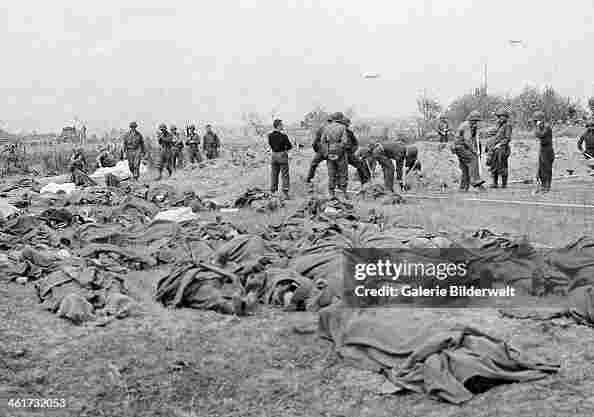
The Targeting of Jewish People:
- The Nazis blamed Jewish people for Germany’s problems and sought to eliminate them entirely.
- Around 6 million Jewish men, women, and children were murdered during the Holocaust.
- Most were killed in gas chambers, through shootings, or by starvation in concentration camps.
Other Groups Affected:
- Apart from Jews, the Nazis targeted Romani (Gypsy) people, disabled individuals, political prisoners, and others they considered “undesirable.”
- Millions of people were imprisoned, forced into labor camps, and killed.
Long-Term Effects of the Holocaust:
- Families were torn apart, and entire communities were wiped out.
- Survivors faced lifelong trauma, both physical and emotional.
- After the war, global efforts were made to prevent such atrocities through international human rights laws.
2. War Crimes and Atrocities
Civilians faced unimaginable horrors during the war, as military forces committed numerous war crimes.
The Nanjing Massacre (1937):
- Japanese forces invaded Nanjing, China, and killed over 200,000 civilians and soldiers.
- The massacre included mass executions, looting, and widespread violence against women.
Nazi Atrocities:
- In Eastern Europe, the Nazis destroyed villages, forced people into labor camps, and killed thousands in retaliation for resistance.
- Prisoners of war and civilians were often tortured and executed.
Bombing of Cities:
- Both Allied and Axis forces targeted civilian areas with large-scale bombings.
- For example, the bombing of Dresden in Germany and Tokyo in Japan killed thousands of civilians and destroyed entire cities.
3. Displacement and Refugee Crisis
The war forced millions of people to leave their homes and become refugees.
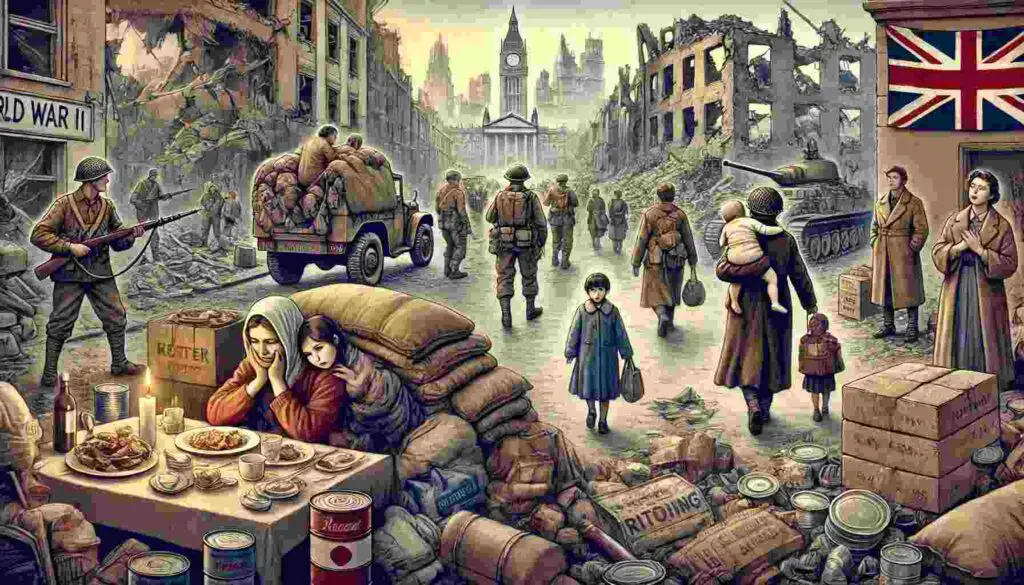
Massive Displacement in Europe:
- During and after the war, millions of Jewish families, as well as other minorities, fled their homes to escape violence.
- German civilians were forced to leave territories that were annexed by other countries after Germany’s defeat.
Refugee Camps:
- Many displaced people ended up in refugee camps with poor living conditions.
- After the war, international organizations, like the (United Nations), stepped in to help resettle these refugees.
Long-Lasting Impact:
- Many refugees never returned home, and their displacement affected future generations.
- The war changed the demographics of entire regions.
4. Economic Hardships and Civilian Life
The war caused severe economic problems for civilians, as resources were diverted to support the military effort.
Rationing of Essential Goods:
- Food, clothing, and fuel were strictly rationed, meaning people had to manage with limited supplies.
- Families relied on government-issued ration cards to buy basic necessities.
Destruction of Cities:
- Major cities like Berlin, London, and Warsaw were heavily bombed, leaving millions of people homeless.
- Factories and infrastructure were destroyed, causing unemployment and poverty.
Role of Women and Children:
- With men away at war, women worked in factories, producing weapons and supplies.
- Children helped by growing food in “(Victory Gardens)” to supplement food shortages.
Post-War Recovery:
- After the war, countries like the United States implemented plans, such as the Marshall Plan, to help rebuild war-torn nations.
- However, the economic recovery for many families took years.
World War 2 was not just a conflict fought by armies—it deeply affected the lives of civilians worldwide. From the horrors of the Holocaust to widespread displacement and economic struggles, the war left scars on millions of people. This tragic history reminds us of the heavy price of war and the need to work toward peace and understanding.
Role of Technology and Innovation
World War 2 was a time of incredible changes in technology and innovation. The war pushed countries to create new tools, weapons, and strategies to outsmart their enemies. These advancements didn’t just shape the outcome of the war but also changed the way wars are fought forever. Here’s a breakdown of the most important innovations and their impact:
1. Weapons Development
During the war, countries developed advanced weapons to gain an edge over their enemies.
Tanks and Armored Vehicles
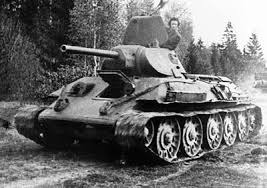
- Tanks became faster, stronger, and better protected.
- Germany’s Panzer tanks and the Soviet T-34 were especially powerful and played key roles in battles.
- Tanks were used for strategies like Blitzkrieg, a fast and aggressive attack that left enemies overwhelmed.
Aircraft and Air Warfare
- New fighter planes like the British Spitfire and American P-51 Mustang dominated the skies.
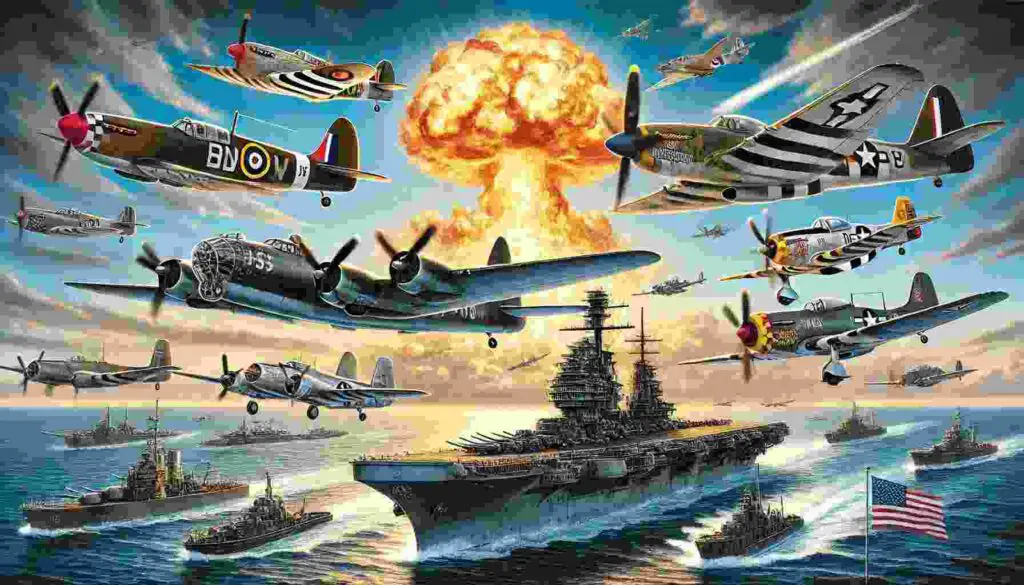
- Bombers like the B-17 Flying Fortress were used to destroy enemy factories and cities.
- Germany introduced the world’s first jet-powered plane, the Messerschmitt Me 262, which was faster than anything else at the time.
Naval Power
- Aircraft carriers became the most important ships, allowing planes to attack targets far from land.
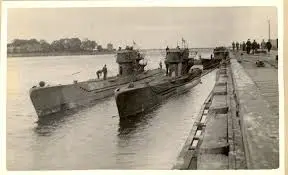
- Submarines, like Germany’s (U-boats), were used to attack enemy ships. To fight back, the Allies developed sonar to detect submarines underwater.
The Atomic Bomb
- The United States built the first nuclear weapons during the (Manhattan Project).
- In 1945, two atomic bombs were dropped on Hiroshima and Nagasaki, forcing Japan to surrender and ending the war.
2. Intelligence and Codebreaking
Spying and decoding enemy messages were critical for success during the war.
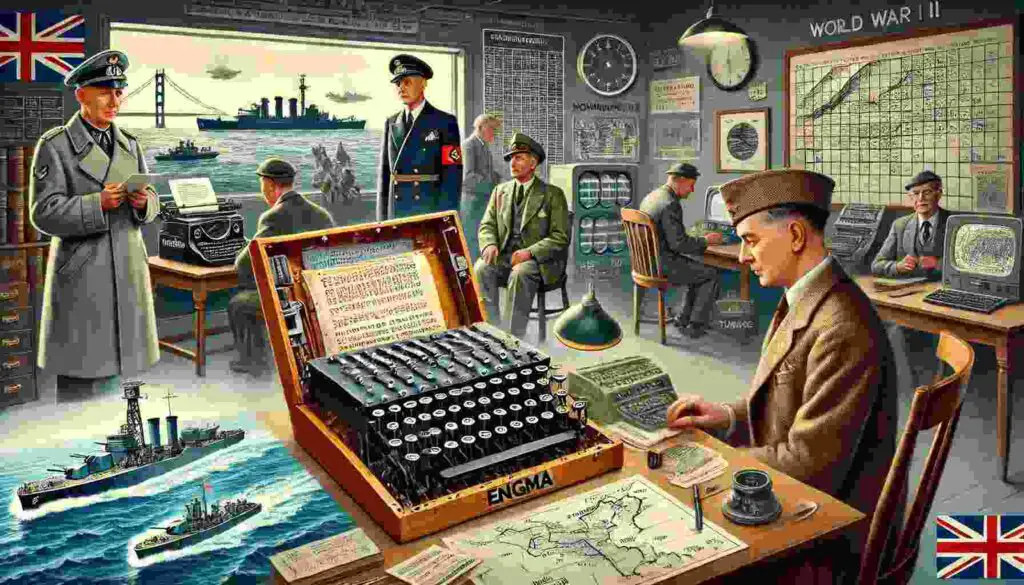
The Enigma Machine
- Germany used the (Enigma machine) to send secret messages.
- British mathematician Alan Turing and his team cracked the Enigma code, giving the Allies a major advantage by knowing Germany’s plans in advance.
Impact of Intelligence
- (Battle of the Atlantic): Cracking German codes helped the Allies protect supply ships from submarine attacks.
- D-Day: Secret information helped the Allies plan the invasion of Normandy, leading to a crucial victory.
Espionage (Spying)
- Countries used spies to gather information about enemy movements and plans.
- Double agents, like Garbo, gave false information to the Germans, misleading them about Allied strategies.
3. Medical Advances
The need to care for millions of soldiers and civilians led to big improvements in medicine.
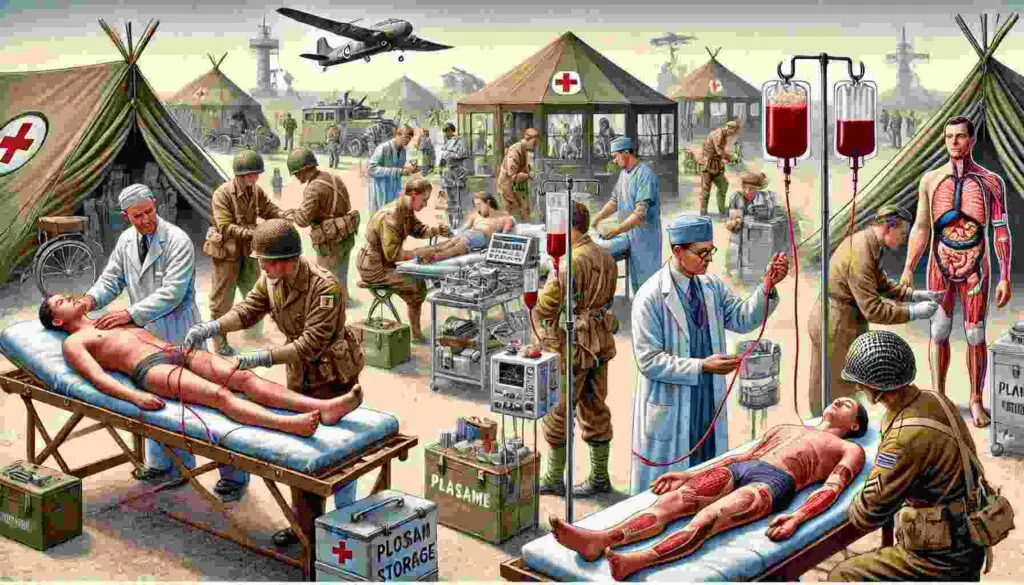
Penicillin
- Although discovered before the war, penicillin became widely used during World War 2.
- It saved many lives by treating infections that could have been deadly.
Blood Transfusions and Plasma
- Doctors learned how to store blood and use plasma, which allowed injured soldiers to get life-saving treatments quickly.
Surgical Techniques
- New methods were developed to treat wounds caused by bullets and explosions.
- Plastic surgery advanced as doctors worked to help soldiers recover from burns and other injuries.
4. Media and Propaganda
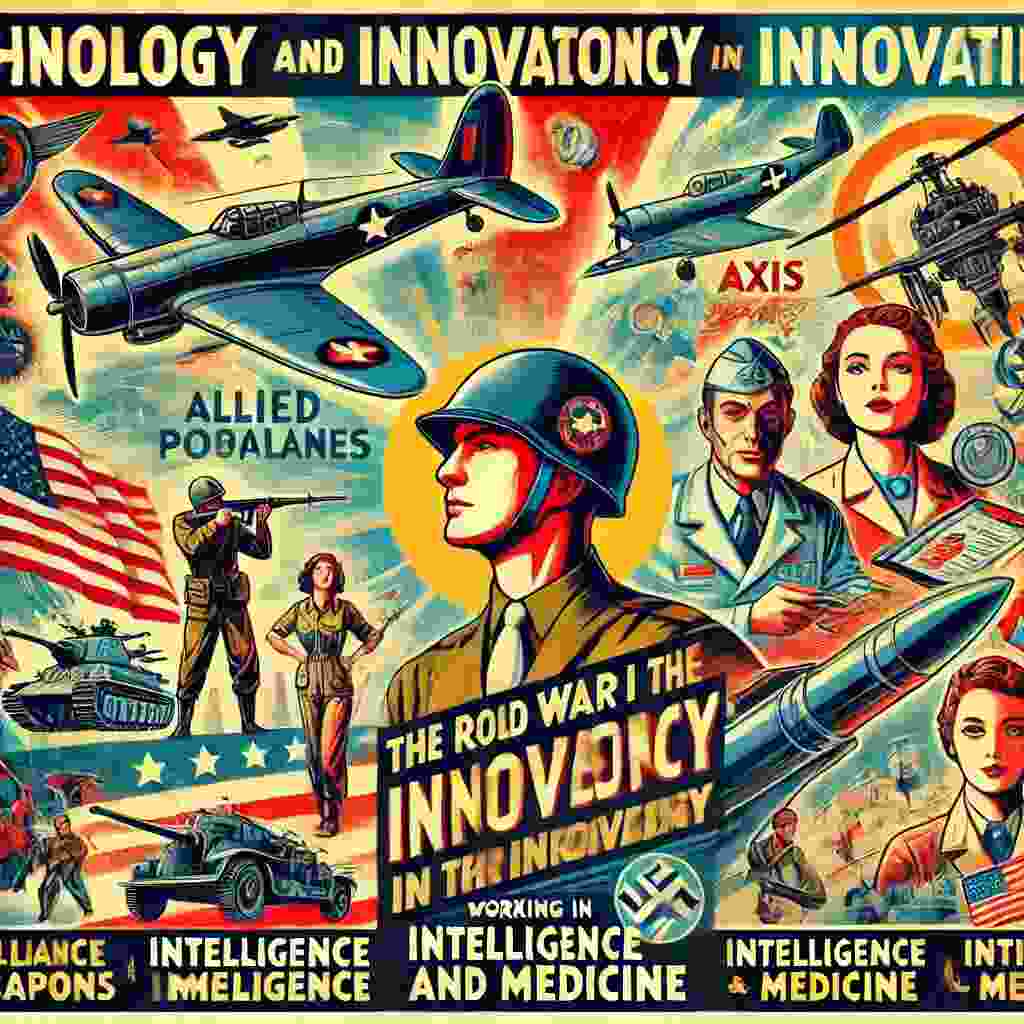
Propaganda was used by both sides to influence people’s thoughts and feelings about the war.
Allied Propaganda
- Countries like the U.S. and Britain created posters and films to encourage people to support the war.
- Slogans like “Loose Lips Sink Ships” warned citizens not to share sensitive information that could help the enemy.
Axis Propaganda
- Germany and Japan used propaganda to inspire loyalty and spread their ideas.
- Germany’s Joseph Goebbels created films and rallies to glorify Nazi rule and demonize their enemies.
Morale and Unity
- Propaganda kept people motivated during tough times, such as food shortages and bombings.
- It also helped governments convince citizens to work harder or join the military.
Technology and innovation played a crucial role in World War 2. From advanced weapons and intelligence to breakthroughs in medicine and propaganda, these developments shaped the war’s outcome and the world we live in today. While these innovations showed the power of human creativity, they also remind us of the destruction and loss that comes with war.
End of World War 2
The end of World War 2 was marked by several important events that changed the world forever. Let’s take a closer look at these key moments and what they meant for the world.
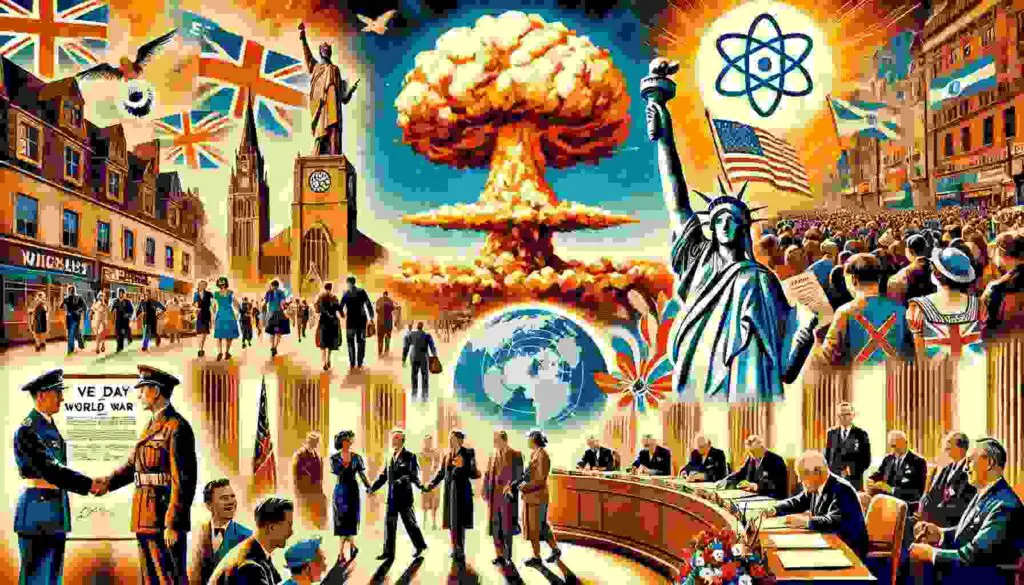
1. Victory in Europe (VE Day)
Date: May 8, 1945
The war in Europe ended after years of intense battles and loss of life.
Key Events Leading to VE Day:
- Soviet Capture of Berlin:
In early 1945, the Soviet Union launched a major attack on Berlin, Germany’s capital. After heavy fighting, Soviet forces captured the city in April 1945.
Hitler’s Death:
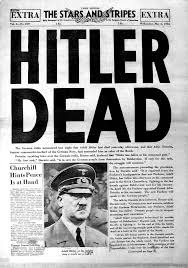
Adolf Hitler, realizing defeat was unavoidable, took his own life on April 30, 1945. This marked the collapse of Nazi leadership.
Germany’s Surrender:

On May 7, 1945, Germany surrendered unconditionally to the Allied forces. The next day, May 8, was declared (Victory in Europe Day) (VE Day) to celebrate the war’s end in Europe.
Impact of VE Day:
- The war in Europe was officially over, but the destruction left millions homeless and entire cities in ruins.
- The Allies began efforts to rebuild Europe and ensure such a devastating war would never happen again.
2. Victory Over Japan (VJ Day)
Date: August 15, 1945
While the war in Europe ended in May, fighting continued in the Pacific as Japan refused to surrender.
Key Events Leading to VJ Day:
- Atomic Bombs on Hiroshima and Nagasaki:
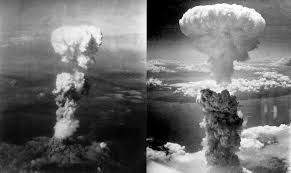
- On August 6, 1945, the U.S. dropped an atomic bomb on Hiroshima, killing thousands and devastating the city.
- On August 9, 1945, a second atomic bomb was dropped on Nagasaki, causing further destruction and forcing Japan to reconsider its position.
- Soviet Union’s Role:
On August 8, 1945, the Soviet Union declared war on Japan and launched a major offensive in Manchuria, weakening Japan further. - Japan’s Surrender:
Japan announced its surrender on August 15, 1945, which became known as Victory Over Japan Day (VJ Day). The formal surrender ceremony took place on September 2, 1945, aboard the U.S. Navy ship USS Missouri in Tokyo Bay.
Impact of VJ Day:
- The war was finally over, bringing relief to millions around the world.
- The atomic bombings showed the devastating power of nuclear weapons, sparking global discussions about their use in the future.
3. Formation of the United Nations
Year: 1945
After the war, world leaders wanted to ensure such a global conflict would never happen again. To achieve this, they created the United Nations (UN) to promote peace and resolve disputes without war.
Facts About the UN:
- Establishment:
The UN was officially formed on October 24, 1945, with representatives from 50 countries signing its charter in San Francisco. - Main Goals:
- Prevent future wars.
- Promote human rights and international cooperation.
- Support economic and social progress around the world.
Importance of the UN:
- The UN provided a platform for countries to work together peacefully.
- It played a significant role in rebuilding war-torn regions and addressing global challenges in the years after the war.
Aftermath of World War 2
The war’s end brought hope for peace but also left behind challenges that shaped the modern world.
Loss of Lives:
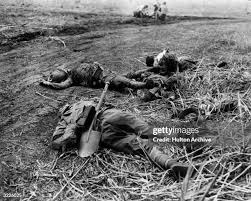
- Over 70 million people died, including soldiers and civilians.
- The (Holocaust) alone claimed the lives of 6 million Jews and millions of others targeted by Nazi Germany.
Displacement and Refugees:
- Millions of families lost their homes and became refugees, especially in Europe and Asia.
Economic Impact:
- Countries like Germany and Japan were left in ruins.
- The United States introduced the Marshall Plan to help rebuild Europe’s economy.
Political Changes:
- Germany was divided into East and West, setting the stage for the Cold War between the U.S. and the Soviet Union.
- New alliances and organizations, such as NATO, were formed to maintain collective security.
Technological Advances:
- World War 2 accelerated innovations in technology, such as radar, jet engines, and nuclear power.
- The use of atomic bombs raised ethical and moral questions about nuclear weapons, leading to efforts to control their spread.
The end of World War 2 was a turning point in history. It brought an end to fascist regimes, led to the creation of the United Nations, and shaped the modern world order. While the war’s conclusion brought peace, it also left scars and challenges that influenced global politics, economics, and society for decades to come.
Long-Term Consequences
World War 2 had a profound and lasting impact on the world, shaping global politics, economies, and societies for decades. Let’s break down these effects in a way that is easy to understand.
1. Political Realignment
After the war, the global balance of power shifted dramatically.
Emergence of Superpowers:
- United States and Soviet Union as Superpowers:
- The United States emerged as a global leader in democracy and capitalism.
- The Soviet Union became a powerful advocate of communism.
- These two nations became rivals, leading to the Cold War, which lasted from 1947 to 1991.
Decline of European Powers:
- Countries like Britain, France, and Germany lost their influence as world powers because the war had drained their resources and economies.
Creation of the United Nations (UN):
- The UN was established in 1945 to promote peace and prevent future wars.
- Goals of the UN:
- Maintain peace.
- Protect human rights.
- Encourage international cooperation.
2. Economic Impact
The war had a huge impact on global economies, but it also led to recovery efforts that shaped modern economic systems.
The Marshall Plan:
- The United States provided financial aid to European countries after the war.
- This plan helped rebuild Europe’s economy and prevented further conflicts.
Industrial Growth:
- Countries like Germany and Japan, despite being defeated, experienced rapid industrial growth during the post-war period.
Global Trade and Organizations:
- New systems like the International Monetary Fund (IMF) and the World Bank were created to stabilize global trade and finance.
3. Decolonization
The war weakened colonial powers, leading to the independence of many countries in Asia and Africa.
End of Colonial Rule:
- European countries like Britain and France could no longer maintain control over their colonies due to financial and military exhaustion.
- This led to the rise of independence movements worldwide.
Major Independence Movements:
- India and Pakistan gained independence in 1947.
- Many African countries achieved independence in the 1950s and 1960s.
Role of the United Nations:
- The UN supported these movements, encouraging self-determination and freedom for colonized nations.
4. Human Rights and Justice
World War 2 highlighted the importance of protecting human rights and brought war crimes to the forefront.
Lessons from the Holocaust:
- The Holocaust, where six million Jews and millions of others were killed by Nazi Germany, shocked the world.
- This tragedy emphasized the need to protect human rights globally.
Universal Declaration of Human Rights:
- In 1948, the UN introduced this declaration to ensure basic freedoms and rights for everyone.
Trials for War Crimes:
- After the war, leaders responsible for atrocities were tried in Nuremberg and Tokyo.
- These trials set a precedent for international justice.
5. Legacy of World War 2
The war left a lasting mark on the world in several ways:
Peace and Cooperation:
- Nations learned the importance of working together to avoid conflicts.
Advancements in Science and Technology:
- Many wartime innovations, such as radar and medical breakthroughs, became the foundation for future development.
Focus on Human Rights:
- The war reinforced the need for equal rights, freedom, and justice for all.
World War 2 changed the world forever. It created new superpowers, ended colonial empires, and highlighted the importance of peace and human rights.
Key Statistics and Facts
World War 2 was one of the largest and most destructive conflicts in history. Here are some important statistics and facts about the war:
1. Death Toll
World War 2 caused an unprecedented number of deaths, making it the deadliest war in human history.
Total Deaths:
- More than 70 million people died during the war, including both military personnel and civilians.
Military Deaths:
- Around 25 million soldiers lost their lives.
- This includes soldiers from all countries involved in the war.
- The Soviet Union suffered the most military casualties, with over 10 million soldiers killed.
Civilian Deaths:
- 45 million civilians died from bombings, massacres, starvation, and other war-related causes.
- The Holocaust, where 6 million Jews were killed, is one of the most horrific examples.
- In China, millions of civilians were killed due to Japanese occupation and events like the Nanjing Massacre.
Deaths in Specific Countries:
- Soviet Union: 27 million deaths (both military and civilian).
- Germany: 7 million deaths (both military and civilian).
- China: Over 15 million deaths.
- Japan: 3 million deaths.
2. Economic Cost
The financial toll of World War 2 was immense, and it reshaped global economies.
Global Economic Impact:
- The estimated cost of the war was $1.6 trillion (adjusted for inflation).
- This includes military expenses, rebuilding destroyed cities, and post-war recovery efforts.
Key Contributors to War Spending:
- United States: The U.S. spent over $341 billion (which would be trillions today), making it the largest financial contributor to the war.
- Germany and Japan: Both countries spent a large portion of their economies on military production, which led to the collapse of their civilian economies.
Reconstruction and Aid:
- The Marshall Plan provided $13 billion (about $115 billion today) to help rebuild Europe after the war.
3. Geographic Scope
World War 2 was a global conflict that involved countries from all over the world.
Countries Involved:
- More than 30 countries fought in the war, forming two main sides:
- Axis Powers: Germany, Japan, Italy, and their allies.
- Allied Powers: United States, Soviet Union, United Kingdom, France, China, and others.
Continents Affected:
- The war took place on six continents, with major battles and events happening in:
- Europe: D-Day, the Eastern Front, and the fall of Berlin.
- Asia: Japan’s invasion of China, Pearl Harbor, and battles in the Pacific.
- Africa: Battles like the ones in North Africa, including El Alamein.
- Oceania: Intense fighting in Pacific islands like Iwo Jima and Guadalcanal.
- North America and South America: Contributed resources, manpower, and logistical support.
Oceans and Seas:
- Major naval battles took place in the Atlantic Ocean, Pacific Ocean, and Mediterranean Sea.
4. Technological and Industrial Scale
World War 2 led to major advancements in technology and industrial production.
Military Production:
- Aircraft: Thousands of bombers, fighters, and transport planes were built.
- Tanks and Vehicles: Tanks like the American Sherman and the German Panzer were mass-produced.
- Ships: Aircraft carriers, battleships, and submarines were built in record numbers.
Manpower Mobilization:
- Millions of men and women were recruited into the military or worked in factories to support the war effort.
- The United States and the Soviet Union drafted millions of soldiers, while other nations contributed through industrial production.
5. Cultural and Social Impact
Global Involvement:
- People from different cultures and backgrounds came together in the war effort, whether fighting on the front lines or supporting from home.
- Resistance movements and underground groups rose in occupied countries, showing the strength of the human spirit.
Displacement:
- Millions of people were forced to leave their homes, making it one of the largest refugee movements in history.
- Many of the survivors spent years in refugee camps before they were able to rebuild their lives.
These statistics highlight the human, economic, and social costs of World War 2. They serve as a reminder of the consequences of war and emphasize the importance of working towards peace and international cooperation.
Conclusion
World War 2 changed the world in many ways, and its effects are still felt today. The war caused millions of deaths and created serious economic and political changes. It also showed us the high costs of war and the importance of working together for peace. By studying this important event, we can learn from the past and work towards creating a peaceful future.
More Information: Click Here

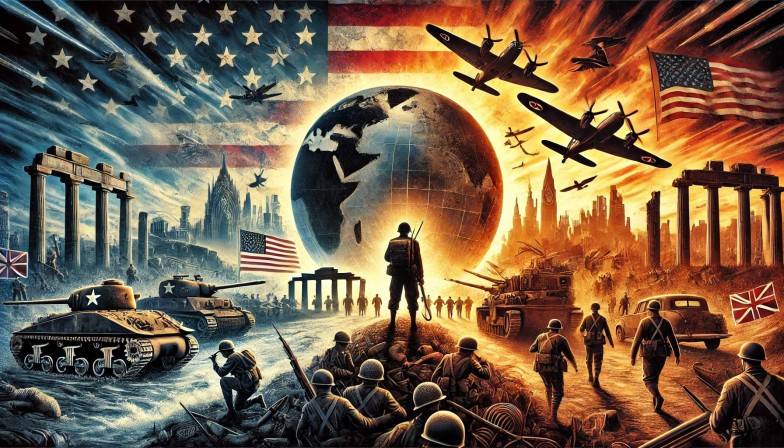
3 thoughts on “World War 2: The Last biggest war in history”